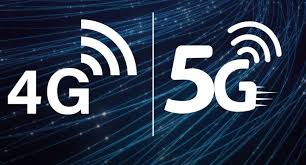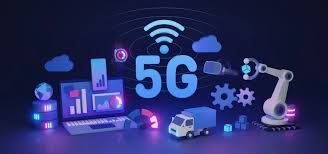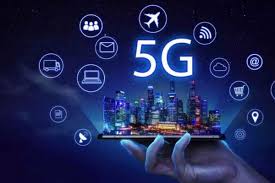Introduction
India has rapidly emerged as a global leader in 5G deployment, achieving the fastest scale-up worldwide.
As of February 2025, the country boasts 270 million 5G subscribers, a testament to its swift adoption and integration of next-generation technologies.
This rapid digitalization has significantly contributed to economic growth and has positioned India as a pivotal market for global telecom giants like Ericsson.
The Role of Ericsson in India’s 5G Expansion

Borje Ekholm, CEO of Ericsson, emphasized India’s importance at the ET Now Global Business Summit, highlighting the company’s 120-year presence in the country and its role in transitioning from 2G to 5G.
With a workforce of 20,000 in India, Ericsson is deeply invested in the nation’s digital journey. Ekholm noted that India’s Digital India program, built around robust connectivity, has been instrumental in this transformation.
The evolution from 4G to 5G has not only accelerated digitalization but also opened avenues for advancements in healthcare, enterprise solutions, and mission-critical applications.
Collaboration Between Ericsson and Indian Telecom Operators

The collaboration between Ericsson and Indian telecom operators has been a cornerstone of this success.
In October 2022, Ericsson announced a long-term strategic 5G contract with Reliance Jio to roll out a standalone 5G network across the country.
This partnership marked a significant milestone, as it was the first collaboration between the two companies for radio access network deployment in India.
Furthermore, Ericsson’s commitment to India’s digital future is evident in its manufacturing initiatives.
The company has been producing 5G equipment locally, reinforcing its dedication to the ‘Make in India’ initiative and ensuring that the country’s digital infrastructure is both robust and self-reliant.
Impact of 5G on Various Sectors

Economic Growth and Employment Opportunities
The deployment of 5G technology has had a profound impact on India’s economy.
Faster and more reliable internet connectivity has boosted various industries, particularly IT, e-commerce, and digital services.
The expansion of 5G has also created numerous job opportunities in telecommunications, manufacturing, and software development.
Healthcare Advancements
One of the most promising applications of 5G technology is in the healthcare sector.
The low latency and high-speed connectivity provided by 5G enable real-time telemedicine consultations, remote surgeries, and efficient management of medical records.
Hospitals and healthcare providers can leverage this technology to enhance patient care, especially in rural areas where medical facilities are limited.
Smart Cities and IoT Integration
India’s 5G expansion plays a crucial role in the development of smart cities.
The Internet of Things (IoT) and artificial intelligence (AI) are being integrated into urban planning to enhance traffic management, energy efficiency, and public safety.
Smart grids, connected surveillance systems, and automated waste management are some of the areas benefiting from 5G technology.
Enhanced Consumer Experience
The rapid expansion of 5G in India has also led to a surge in internet consumption, with users leveraging faster networks for a variety of applications, including high-definition video streaming, gaming, and virtual reality experiences. With the advent of 5G, the digital experience for consumers has been significantly enhanced, providing seamless connectivity and improved service quality.
Government Initiatives and Policy Support

The Indian government has played a pivotal role in the country’s 5G deployment.
The Digital India initiative, aimed at improving internet accessibility and infrastructure, has facilitated a smoother transition to 5G technology.
The government has also introduced favorable policies, such as spectrum auctions and subsidies for telecom companies, to accelerate the rollout of 5G networks.
Investment in Research and Development
Recognizing the potential of 5G, India has increased investments in research and development.
Several startups and technology firms are actively working on innovations that leverage 5G capabilities. The establishment of 5G testbeds and incubation centers has further propelled advancements in this sector.
Challenges in 5G Implementation

Despite its rapid progress, India faces several challenges in the widespread adoption of 5G technology.
Infrastructure Development
One of the primary challenges is the need for extensive infrastructure development.
The deployment of 5G requires a dense network of small cells, fiber-optic cables, and upgraded base stations.
Ensuring nationwide coverage, especially in remote and rural areas, remains a significant hurdle.
High Deployment Costs
The financial investment required for 5G deployment is substantial.
Telecom operators must invest heavily in upgrading their existing networks and acquiring spectrum licenses.
These costs can be a barrier for smaller players in the industry.
Data Security and Privacy Concerns
With increased connectivity comes the risk of cybersecurity threats. Ensuring robust data security measures and protecting user privacy are critical aspects of 5G implementation.
The government and telecom companies must work together to establish stringent regulations and security protocols.
Future Prospects of 5G in India

Looking ahead, India is poised to become a global hub for 5G innovation.
The continued collaboration between telecom operators, technology companies, and the government will drive further advancements in this field.
Expansion of 5G Use Cases
As networks continue to evolve, the potential for new use cases in sectors like education, manufacturing, and agriculture grows exponentially.
Remote learning through augmented reality (AR) and virtual reality (VR), automated factories with AI-driven robotics, and precision farming using IoT sensors are some of the areas that will benefit from 5G technology.
Transition to 6G
While India is currently focused on expanding its 5G infrastructure, research on 6G technology has already begun.
The country aims to be at the forefront of the next generation of wireless communication, ensuring sustained technological leadership in the global market.
Conclusion
India’s swift and strategic deployment of 5G technology underscores its position as a global digital leader.
Through collaborative efforts with industry leaders like Ericsson and a strong focus on digital infrastructure, the nation is poised to harness the full potential of 5G, driving economic growth and technological innovation for years to come.
With continued investments in research, infrastructure, and cybersecurity, India is set to shape the future of global telecommunications and digital transformation.